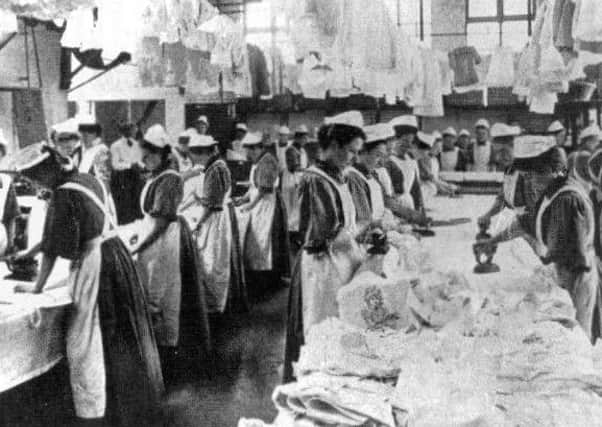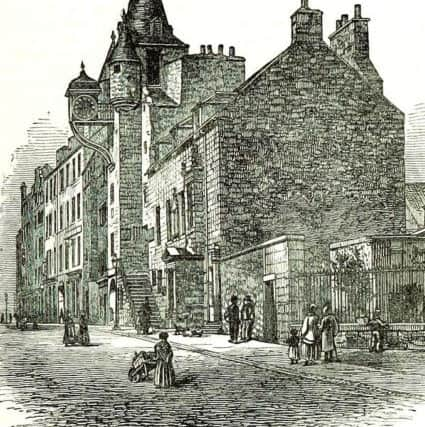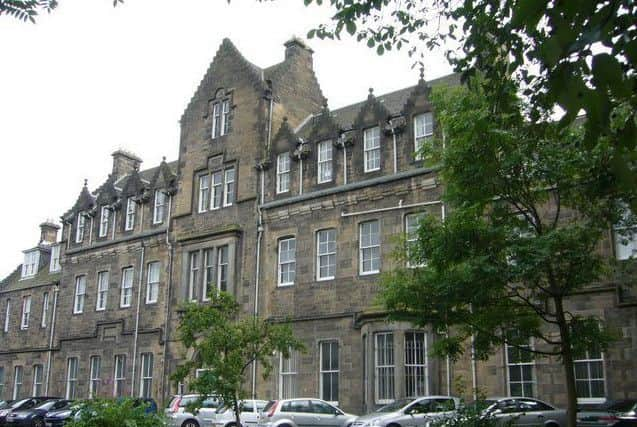Scotland's Magdalene Asylums for 'fallen women'


At their height the Magdalene Asylums, which were run around the world, had 20 refuges in Scotland.
The first, in Edinburgh, opened in 1797 with the Glasgow branch opening 15 years later given rising concerns about vice, venereal diseases and the moral health of the country.
Advertisement
Hide AdAdvertisement
Hide AdIn the capital, the charitable organisation, funded by church collections and private donations, opened in the Canongate in the Old Town, a popular location for street prostitutes.


Originally a half-way-house for women coming out of prison, it officially became a refuge for women wanting to leave prostitution with a good dose of Christian teaching helping its residents to repent their ways.
Playwright Morna Burdon has researched the Edinburgh Magdalene Asylum ahead of a show on women’s resistance to be staged at Dundee’s Verdant Works next week.
Ms Burdon said: “The asylum was about the great and the good trying at some level to help people they considered to be fallen women. Quite often these women were just young girls and teenagers who didn’t have anyone to look after them.


Advertisement
Hide AdAdvertisement
Hide Ad“Some of them were brought to the city by industrialisation, some from the Highlands, sometimes pregnant and sometimes forced into prostitution.
“The idea was somehow to cleanse these women and rehabilitate them . But it wasn’t really about rehabilitating them from their suffering, it was much more about moral cleansing.”
In the early 1800s, there were around 200 brothels in Edinburgh with Dr William Tait, who took over the Magdalen Asylum in 1842 and moved it to then leafy Dalry, publishing an account on prostitution in the city.
He described three classes of brothels: the first for noblemen, merchants and military officers; the second for businessmen, clerks and theologians; and the third for soldiers, sailors and country folk.


Advertisement
Hide AdAdvertisement
Hide AdMost of the women working in brothels were just teenagers and some were as young as nine or ten, Dr Tait found.
The Magdalene Asylum was “sharply segregated place,” according to Scot-Pep, a sex worker’s rights organisation based in Edinburgh, with prostitutes kept away from those women of a “better order.”
Women were kept in solitary confinement for the first three months “to eradicate the taint of moral contagion”. Behaviour was often cruel, it has been claimed.
One resident of the Edinburgh asylum, Mary Paterson, originally from Glasgow, was murdered by Burke and Hare shortly after leaving the institution on April 8 1828.


Advertisement
Hide AdAdvertisement
Hide AdA report by William Lothian, a clerk to the Edinburgh Magdalene Asylum, to the Lord Provost of Edinburgh in 1819, details how around 40 women would be resident there at any one time.
Its operation was also supported by the payment for work done at the asylum, such as laundry and sewing.
A chaplain and two superintendents gave daily religious instruction in the “neat, clean and commodious house.
“The Women are comfortably maintained, decently cloathed (out of part of their own earnings) and have good beds,” the report said.
Advertisement
Hide AdAdvertisement
Hide AdIn Glasgow, the Magdalene Asylum evolved into the Magdalene Institution with a new Glasgow System created to deal with court appearance of women who refused to be checked for venereal diseases by policemen.
The secretive Lock Hospital was also set up in Rottenrow Lane in 1805 to treat women with venereal disease.
Meanwhile, the Magdalene Institute took women who were free from syphilis, not pregnant, to be newly ‘fallen’ and willing to submit to discipline.
The fifth annual report of the Magdalene Institute, written in 1864, said it was of “profound regret an of painful surprise” that the “resorts of profligacy should so much abound” in both Glasgow and Scotland.
Advertisement
Hide AdAdvertisement
Hide AdWith 109 inmates admitted that year, 21 had been restored to parents or friends, 11 to domestic service, eight to warehouses and five to work in mills. Seven escaped.
The report is rich in the language of Victorian class hierarchy.
Inmates were described as “very low caste” with the victims of prostitution “for the most part, drawn from the very lowest stratum of society.”
“It is gratifying to find that comparatively few have enjoyed the advantages of a Christian home,” the report said.
Advertisement
Hide AdAdvertisement
Hide AdSome detail is given on the women highlighted as success stories of the board.
These included a 22-year-old admitted in 1862 who fell “before the wiles of an unprincipled villain” who promised her marriage, despite already having a wife.
She entered a “house of ill fame” following the breakdown of the relationship before seeking a place in the refuge where her “conduct was exemplary”. After release, she returned to her parents in London.
A letter to the institution by the woman later said: “ I may truly say I am a brand plucked from burning.”
Advertisement
Hide AdAdvertisement
Hide AdIn Glasgow, wayward girls were placed at the Magdalene Institute by parents or probation officers until 1958.
In September that year, the Glasgow Herald reported women escaping from the Institute, alleging ill treatment. The matter was looked into by the Secretary of State for Scotland and the institution was closed shortly after.
In Ireland, the Magdalene Asylums, or Magdalene Laundries, were usually run by Roman Catholic orders and different to the Scottish system. A scandal broke in 1993 after a mass grave containing 155 corpses was found in the convent grounds of one of the laundries in Dublin.
A formal state apology was issued in 2013 and a £50 million compensation scheme for survivors of abuse was set up.
- Bonnie Fechters - Songs & Stories of Hope & Resistance - devised, directed and performed by Morna Burdon is at Verdant Works, Dundee on Saturday March 11 at 7pm.
